Read an Excerpt of the Rev. Ed Bacon's 8 Habits of Love
There was a glorious green field filled with people. But beneath their feet, the ground was opening up to reveal the orange flames of hell, reaching upward to consume all those who had not been saved. The field was crowded with men, women, and children, some of whom were being lifted up toward light-filled, billowing clouds—these people were supposedly Christ's elect. Others had flames lapping at their ankles and expressions of horror on their faces—these had been denied Christ’s love and were destined to burn in hell.
What I remember most clearly was that certain families were torn apart by this division between good and evil, those to be saved and those to be damned. Some children fell to their demise while their happy parents were lifted up. The reverse was also the case. It was traumatizing not only in respect to myself—where would I end up?—but also in respect to others I knew and loved. Where would they end up? I grasped that even in my small town there were some individuals I knew whom I would never see again, without knowing ahead of time which ones. I felt nauseated, slammed the Bible shut, and ran from the room.
The experience of gazing upon these two imposing, contradictory images of love and fear launched me on my own life-changing journey toward self-discovery, healing, and ministry. It registered in my soul that these two conflicting narratives could not coexist, and that I would have to jettison one in order to fully embrace the other.
After that, in countless seemingly ordinary incidents I began to recognize the critical role of love as a liberating, joy-filled, and guiding force. This growing awareness embedded in me an unshakeable certainty that within each and every human being there lives a core of love and goodness. To be sure, the world and its inhabitants suffer from real evil. Yet at the same time, the world is not divided into persons who are good or evil, blessed or damned. Rather, each of us carries within us a core of sacredness that no evil can damage or distort.
We have the ability to change the course of our lives when we become aware of that core of sacredness—which I call the Beloved—and begin to live with it as our guide. Whenever we have a flash of love, innocence, acceptance, inspiration, awe, or wonder, or we’re moved to tears or filled with joy, we must remind ourselves: this is the real me. We must not let such moments simply pass us by. We must stop and appreciate those moments and act on them—and ask that we receive more of them in the future. This book is my call to you, asking you to embark on this never-ending adventure, as I have done, and take your own steps with this book as your guiding force.
Beneath our wounds and resentments, our fears and insecurities, our neediness and addictions, we are all loved deeply and unconditionally. We therefore each carry within us the capacity to love deeply, unconditionally, and fearlessly. It is through practicing the Habits of Love that we can transform our lives by freeing ourselves from fear. In every concentric circle of human interaction, we can be instruments of bringing people together instead of drawing lines of enmity to separate us.
When we embrace the eight habits I lay out in this book, we recognize that our tired and reflexive responses to our loved ones, and even to strangers, fail to take into consideration their intentions and dreams and our shared goals. We realize that with our children, we can better embrace spontaneity and adventure once we’ve stepped back from constrictive fears and expectations. In our communities, with our hearts open, we instinctively become less reactive and more responsible. At work, with our minds open, we are less prone to misunderstandings and more likely to feel deeper connections. Our interactions with others become infused with grace and kindness.
When we employ the energy of love, we are leaving fear behind us and choosing instead to make our way toward a new, inspiring goal: living our lives with open hearts.











